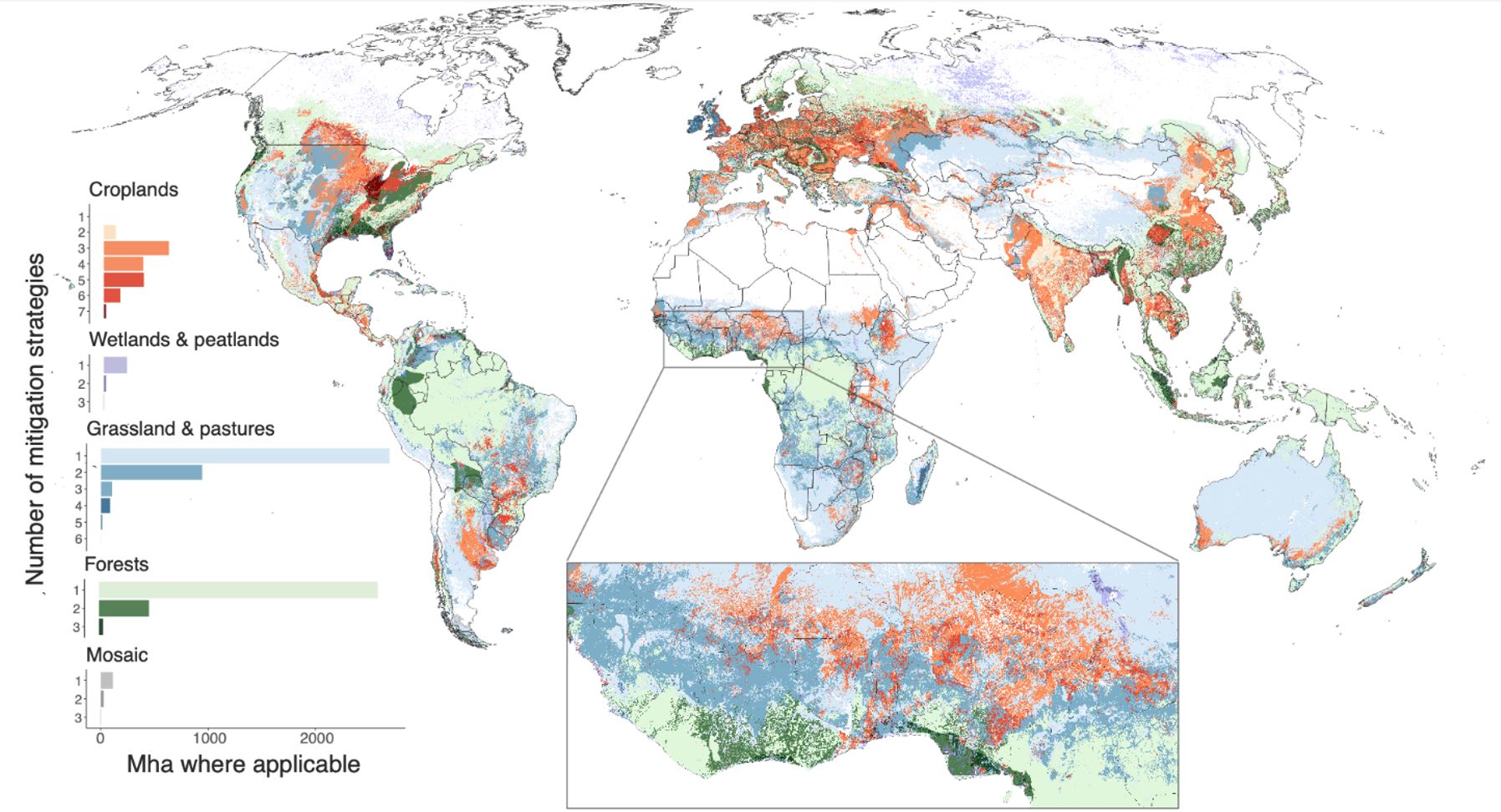Principal Investigator
At a Glance
Reaching net-zero emissions in the current century entails a massive deployment of various land use and land management practices aimed at reducing carbon emissions and increasing carbon sequestration. These strategies range from avoiding deforestation and restoring carbon dense ecosystems, to more technical solutions such as enhanced chemical weathering and bioenergy with carbon capture and storage. To explore the options and opportunity costs resulting from scaling up landand nature-based climate mitigation, Jonathan Levine’s group derived global, high-resolution maps of 19 different strategies for mitigating climate change. These maps provide opportunities for how and where land-based mitigation can positively contribute to global efforts to reduce climate change.
Research Highlight
Land-based climate mitigation strategies are actions aimed at increasing carbon storage or reducing greenhouse gas emissions through exploiting the natural processes occurring in vegetation and soils. These actions are a critical component of nearly all climate mitigation plans. How and where landbased mitigation will be put into practice across the globe, however, remain unknown. Both nature-based (e.g., reforestation) and technology-based (bioenergy with carbon capture) solutions are needed to reduce future climate change. Both require land but, unfortunately, they are rarely studied together. As a consequence, whether and how different methods of increasing carbon storage compete for land remains poorly explored.
To help fill this gap, the Levine group synthesized information on the land requirements and carbon benefits of 19 different land-based climate mitigation strategies. These strategies can help stabilize the climate by (1) avoiding the loss of carbondense ecosystems; (2) restoring carbon-dense ecosystems; (3) modifying agricultural and forestry management practices to reduce emissions and increase sequestration; or (4) converting habitat to store additional carbon in aboveground biomass (e.g., afforestation). For each strategy, the group used satellite imagery and spatial data products to estimate the distribution of land biophysically suitable to climate mitigation via each mitigation strategy at a high spatial resolution (Figure 3.1).

Global distribution of the number of land-based mitigation strategies that are possible in different land cover types across Earth. Legend bars represent the total area (in millions of hectares) where that number of mitigation strategies are possible, highlighting the large area of overlapping strategies in croplands and pastures, and the non-overlapping area in forests, grasslands, wetlands, and peatlands. The color scheme denotes the current land cover type, where darker colors indicate a higher number of mitigation strategies are suitable to that region Inset: High resolution (1km) estimate of the number of possible land-based mitigation opportunities in West Africa.
The researchers found that almost a quarter of Earth’s land area is suitable for more than one mitigation strategy (Figure 3.1). Within this area, the research group found that many agricultural landscapes are suitable for multiple mutually compatible strategies. This means that multiple actions to store carbon or prevent emissions can be applied to the same landscape. However, the researchers also identified trade-offs between restoration, carbon-smart agricultural management, and expanding bioenergy, indicating conflicts that could arise across much of Earth’s land area where mitigation is possible.
The Levine group’s analysis gives local stakeholders, communities, and governments a range of options for how plant and soil processes can be used to reduce carbon emissions and increase carbon storage on land. The analysis identifies a large global area where climate mitigation is possible. However, scaling up several of these mitigation strategies over much of their suitable area often precludes the implementation of other strategies in those areas. Consequently, society has important trade-offs to consider when deciding which land-based mitigation strategies to implement. Ultimately, the goal of this work is to help interested parties decide where land-based mitigation should be placed across the globe to maximize carbon storage, biodiversity conservation, and human livelihoods.




